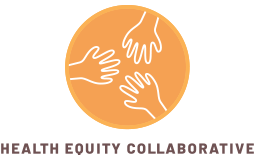16 Jan HEC/CDC Discussion – Navigating the 2023-2024 Respiratory Virus Season: A Closer Look at the Impact on Communities of Color
Amy Hinojosa, President and CEO of MANA and founding member of the Health Equity Collaborative (HEC), recently sat down with Dr. Leandris Liburd, acting director of the Centers for Disease Control and Prevention’s Office of Health Equity (OHE), to discuss respiratory virus activity in the U.S. and other critical aspects of our nation’s public health sector. This insightful talk delved into the importance of vaccinations, available resources for patients seeking care, and strategies to bridge health inequities among diverse populations. Watch the full discussion here.
As we navigate the current respiratory virus season, it’s crucial to acknowledge the disproportionate impact these viruses can have on certain communities. While respiratory illnesses affect everyone, communities of color often face unique challenges that exacerbate their vulnerability.
A Season of Multiple Threats:
This year, we’re facing a triple threat:
- RSV: Respiratory syncytial virus (RSV) is a common respiratory virus that typically causes mild, cold-like symptoms. However, it can be severe for infants and young children, particularly those with underlying health conditions.
- Flu: Influenza, or the flu, is a highly contagious respiratory illness that can cause significant illness, hospitalization, and even death.
- COVID-19: The ongoing COVID-19 pandemic continues to pose a threat, with new variants emerging and the potential for winter surges.
Compounding Inequalities:
Communities of color face various social and economic factors that put them at higher risk for severe complications from these viruses:
- Healthcare access: Limited access to quality healthcare, including preventive care and vaccinations, can make it harder for individuals to receive timely diagnosis and treatment.
- Social determinants of health: Factors like poverty, housing instability, and food insecurity can weaken immune systems and increase vulnerability to illness.
- Environmental factors: Communities of color are often disproportionately exposed to environmental pollutants, which can further compromise health.
- Misinformation and mistrust: Historical injustices and systemic racism can lead to mistrust in healthcare institutions and public health initiatives, hindering vaccination rates and preventative measures.
Bridging the Gap: Towards Equitable Protection:
Addressing these disparities requires a multi-pronged approach:
- Increase healthcare access: Expanding access to affordable, culturally competent healthcare is crucial for early diagnosis, treatment, and preventive care.
- Targeted outreach and education: Culturally sensitive education campaigns and community engagement efforts can address vaccine hesitancy and provide accurate information about respiratory viruses.
- Invest in social determinants of health: Addressing factors like poverty, housing, and food insecurity can strengthen overall health and resilience.
- Promote trust and collaboration: Building trust with communities through partnerships with local leaders and organizations is essential for effective interventions.
A Shared Responsibility:
Protecting communities of color from the impact of respiratory viruses requires a collective effort. By acknowledging the inequities, investing in solutions, and promoting equitable access to healthcare and resources, we can build a healthier future for all.
Remember:
- While certain communities face greater challenges, everyone can take steps to protect themselves and their loved ones from respiratory viruses.
- Frequent handwashing, mask-wearing in crowded settings, and staying up-to-date on vaccinations are crucial for individual and community protection.
- By practicing empathy and understanding, we can foster a supportive environment that prioritizes the health and well-being of all community members.
To learn more about respiratory viruses and how to protect you and your loved ones this season, please be sure to check out HEC’s interview with Dr. Leandris Liburd, acting director of the Center for Disease Control and Prevention’s Office of Health Equity (OHE).


